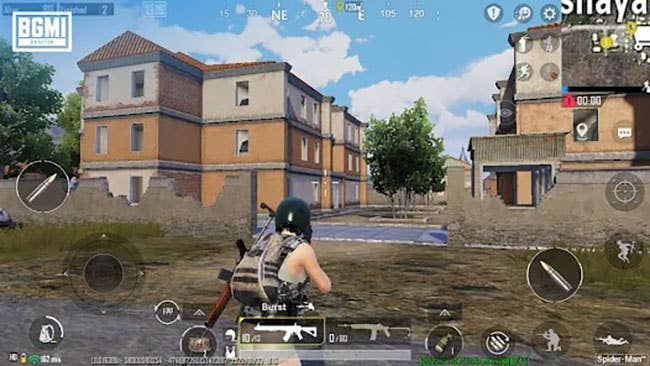Why India's games spending is expected to reach $9.2bn in five years
VC firm Lumikai's Salone Sehgal discusses why Indian players are moving from real-money titles to midcore
India's gaming revenues rose 23% in the last fiscal year to $3.8 billion – and are expected to nearly triple in the next five years.
That's according to a new report by India-based venture capital firm Lumikai, created in collaboration with Google and Deloitte. Some of the report's consumer data was based on a survey of 2,269 India smartphone users.
According to this year's 'State of India Interactive Media and Gaming Research' report, mobile games accounted for 30% of the nation's $12.5 billion new media market in the fiscal year ending March 31, 2024. New media also encompasses video content, animation and VFX, audio streaming and social media.
In fact, games revenues were nearly level with the $3.9 billion from video content, the largest new media segment.
And games are projected to reach $9.2 billion in revenue by the end of the 2029 fiscal year.

Lumikai's founding general partner Salone Sehgal tells GamesIndustry.biz the Indian games market has been plagued by misconceptions over the years – for example, that players only engage with real-money games – but the data demonstrates the industry is much broader.
"The [typical] narratives of 'Indians don't play games' and/or pay for games – they have been debunked completely," she says. "So if we take that off the table, if you're looking for the next billion gamers, they're going to come from the Indian market."
According to the report, India stands as the world's second biggest mobile games market with 15.2 billion downloads in the year ending March 31, 2024.
Meanwhile, the total number of players rose by 4% to 591 million in the past year.
Sehgal tells us that, while most markets saw a spike in gaming revenues during the early years of the COVID-19 pandemic, the lockdowns helped boost mobile games and draw both revenue and players away from their real-money counterparts in a way that hadn't happened before.
"Post-COVID is when gaming and mobile gaming largely became a prevalent phenomenon," she explains. "Real money gaming in India is a decade-long phenomenon, it started back with the earliest companies that were set up about ten years back, and over those ten years they built a very large userbase, which got accelerated during 2019 to 2021. Whereas UPI [Unified Payments Interface] has unlocked free-to-play gaming, and that only started happening really during COVID. So free-to-play has become a big phenomenon."
The Unified Payments Interface is an India-only instant payment system that first launched in 2016 and allows users to handle digital payments via bank accounts without the need for debit or credit cards. As more and more Indian players have begun using it, paying for video games has become easier – case in point, 83% of all survey respondents who spend money on games prefer using UPI to make in-game purchases.
"If you're looking for the next billion gamers, they're going to come from the Indian market"
Another eight million players began spending money on mobile games in the past year, bringing the total number of paying players to 148 million.
The number of in-app purchases made rose 41% year-on-year, making it the fastest-growing source of that $3.8 billion revenue – and this has been primarily driven by the rising popularity of midcore games such as Battlegrounds Mobile India (Krafton's India-only version of PUBG), Clash of Clans, and Garena's Free Fire Max.
According to Lumikai's survey, 64% of users who pay for real money games also spent on midcore titles in the past year.
25% of all gamers surveyed said they have spent money on games, unchanged from last year, while 18% said they now make games purchases having only previously enjoyed free-to-play games without spending.
The average revenue per paying user rose 15% year-on-year, and again, Sehgal believes the rise of midcore games is a crucial factor. Specifically, she credits the launch of PUBG – prior to its Battleground Mobile India refresh – as the turning point.
"Previously it was thought a 1GB game monetising via microtransactions and IAPs was not going to work in India," she explains. "PUBG actually made that possible. Now with Battlegrounds Mobile India, Free Fire Max, and Clash of Clans, we see other titles which are scratching that midcore itch and foreign publishers are now seeing revenues from just in-app purchases in India come through.
"When you add UPI to that, which enables very seamless commission-free small ticket transactions, that's really unlocking monetisation [in India]."

The report offers a deeper look at what gamers are spending on, with 66% of paying users saying they buy in-game currency. 61% say they buy performance-based upgrades compared to the 51% who buy cosmetics and other visual items. Only 36% of spending players buy loot boxes and other bundles, while 24% invest in season passes.
Sehgal adds that other misconceptions about India's games scene suggested that the audience was "largely male, largely urban, and largely a rich affluent phenomenon." Again, the data proves otherwise; the number of women who play video games grew from 41% in FY 2023 to 44% in FGY 2024, with Sehgal adding that they're mostly playing casual titles.
66% of gamers are based in non-metro cities, while 43% are described as "first-time earners" in the 18 to 30 age group.
Most of India's gamers are on lower-end mobile devices; 43% use smartphones that cost between $200 and $400, while 38% are on ones that cost less than $200. This, Sehgal explains, means they have access to cheap data and reasonably good mobile devices.
Combine this with the propensity for digital payments, the rise in paying behaviour, and the fact that over 40% of players are between 18 and 30, and Sehgal says you have "the perfect recipe of why Indians have now started to pay for games."
The average amount of time spent playing video games is also on the rise, up 30% to 13 hours per week – double the amount of time spent on social media.
"Previously it was thought a 1GB game monetising via microtransactions and IAPs was not going to work in India. PUBG actually made that possible"
Looking forward, Sehgal says there are plenty of opportunities for both India-based games firms and overseas publishers – and the former are particularly well placed to capitalise on the growth of gaming in India.
"60% of gamers say they want to see games that represent our local culture and language," Sehgal explains. "If we apply that same lens to entertainment, Indians consume a lot of global content, but we also consume very mass market domestic content. That is not being reflected in our games today – our games are largely made by global publishers. There is a dearth of India-specific or cultural games.
"China, for example, has a vast consumption of games which are built for the Chinese market – notwithstanding all the problems around approvals that's happened in the last couple of years in China, but China's domestic market was built by fueling and essentially building for the domestic market."
Meanwhile, she advises overseas publishers – especially from the West – that "there are adaptations required" if you're targeting India.
"The likes of a Riot or Krafton have very heavily started to localise. They've done [partnerships] with local celebrities, they've integrated local characters, they've done events from Indian festivals – those are getting reflected in their games. Their pricing is reflective of India pricing. So all of those things are important to keep in mind if one is to try and tap into the India market."

